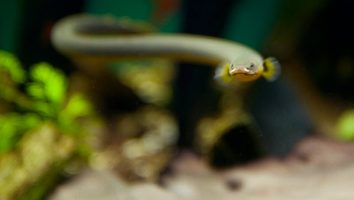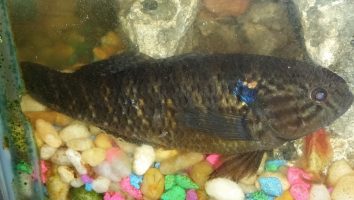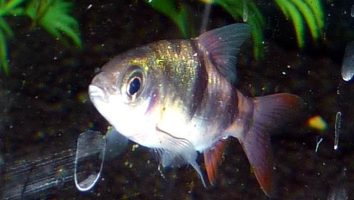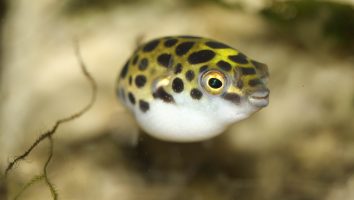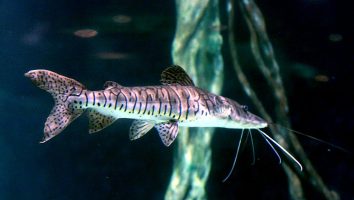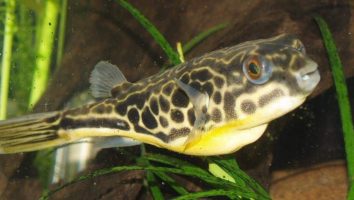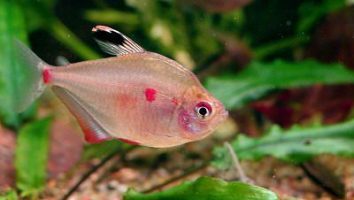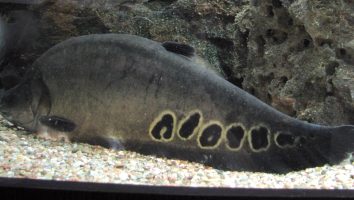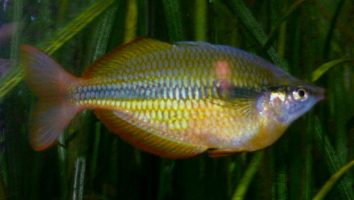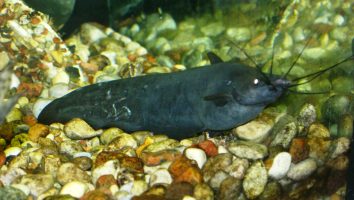The Panda Barb is a beautiful freshwater fish that is perfect for the beginner aquarist.
This guide will teach you everything you need to know about Panda Barb care. You’ll learn about their diet, size, lifespan, and more!
Table of contents
Species overview
The Panda Barb (Capoeta tinca) is a freshwater fish that’s found in the rivers of Pakistan, India, and Nepal.
They prefer habitats with moderate currents and a good amount of vegetation. This vegetation provides them with both food and hiding spots from predators.
Panda Barbs are omnivores, so they will eat both plants and small invertebrates. In the wild, their diet consists mostly of algae, but they will also consume small insects and crustaceans.
Panda Barbs are a hardy fish that can tolerate a wide range of water conditions. They are a peaceful fish that can get along with most other tank mates.
The main attraction of the Panda Barb is its unique black and white coloration. This coloration is what earned this fish its name, as it resembles the Panda Bear.
Appearance
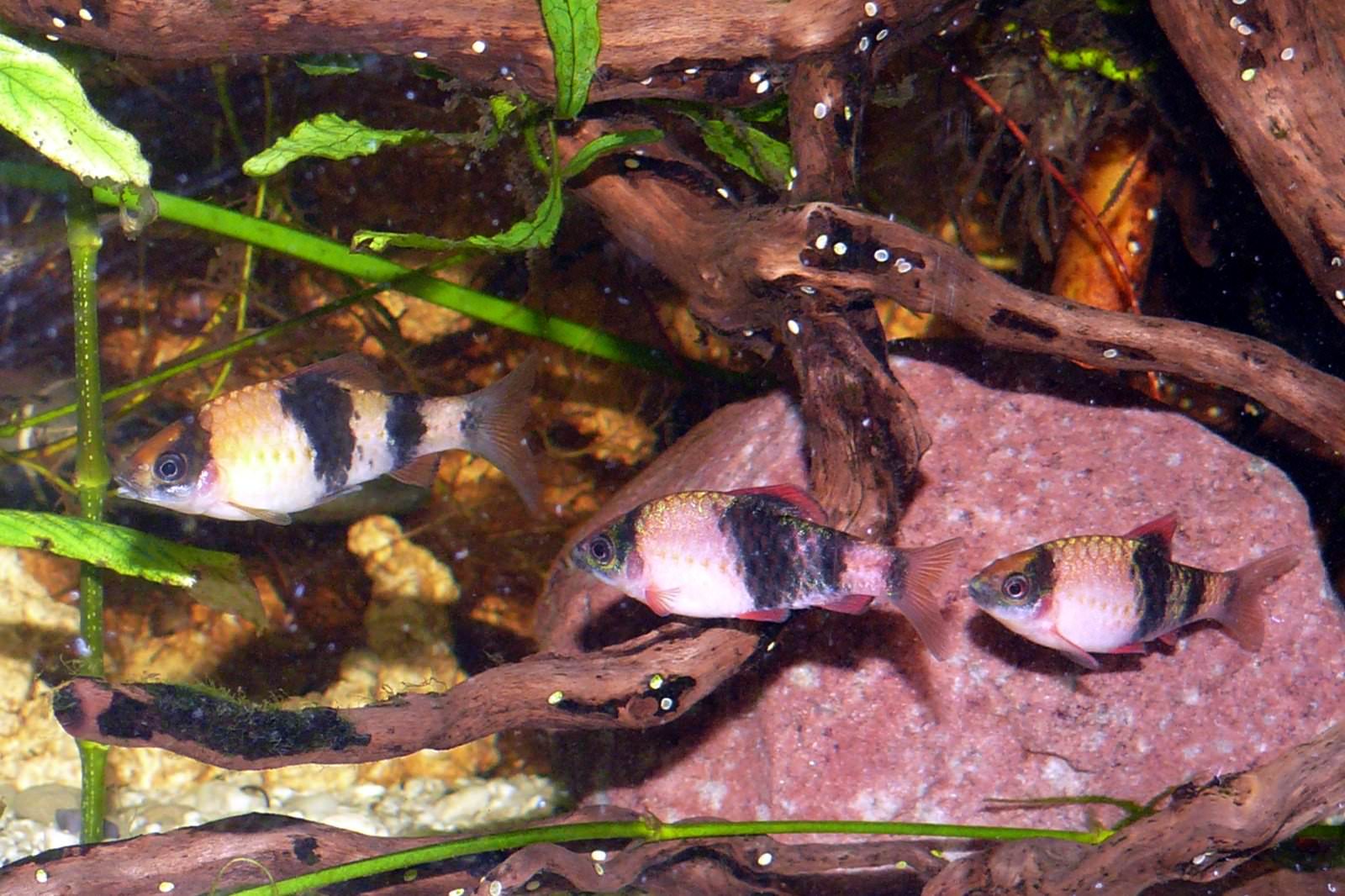
The Panda Barb is a very beautiful freshwater fish that gets its name from its distinct coloring. The body of this fish is a pale white or cream color. The fins on this fish are also pale, but they have a very noticeable black striping.
The black striping on the fins of the Panda Barb is what sets this fish apart from other fish. The pattern starts at the base of the dorsal fin and extends all the way to the caudal fin. This black striping is also present on the anal fin and the pectoral fins.
The Panda Barb has a long and slender body shape that is similar to other barbs. The body of this fish is covered in small scales that have a shimmery quality to them.
The fins of the Panda Barb are all fairly standard in terms of size and shape. The dorsal fin is located in the middle of the back and is slightly taller than the anal fin. The pectoral fins are located on the sides of the body and are used for steering.
The caudal fin of the Panda Barb is forked and symmetrical. This fish also has a small adipose fin located just behind the dorsal fin.
Lifespan
The average lifespan of a Panda barb is 4 to 6 years. These fish are relatively hardy and can withstand a fair amount of abuse. However, their lifespan will be significantly shortened if they’re not kept in optimal conditions.
Size
The average size of a Panda Barb is around 2.5 inches, with some specimens reaching up to 3 inches in length. Males are typically larger than females, but the size difference is not dramatic.
Tank
Tank Size
The recommended minimum tank size for a Panda barb is 20 gallons. If you’re looking for a schooling fish then you should keep at least 6 fish together. This will allow them to feel more secure in their environment and reduce aggression.
For every additional fish you add to the school, you should add 2-4 gallons to the tank size. So, if you wanted to keep a school of 10 fish then you would need a tank that was at least 30 gallons.
Water Parameters
The Panda Barb is a freshwater fish that is native to the fast-flowing streams of Southeast Asia. In the wild, they are used to living in water with a high level of dissolved oxygen.
To replicate these conditions in the home aquarium, it is important to maintain a high level of water movement. A powerhead or canister filter will help to keep the water well-oxygenated.
Panda Barbs are also used to living in water with a neutral pH. To maintain a neutral pH, it is important to use a high-quality water conditioner when setting up the aquarium and to do regular water changes.
The following are the ideal water parameters for Panda Barbs:
- Water temperature: 72 to 82 degrees Fahrenheit
- pH levels: 6.8 to 7.6
- Water hardness: 5 to 15 dGH
- Alkalinity Levels: 4-8 dKH
What To Put In Their Tank
Panda barbs are a species of fish that come from fast-moving rivers. This means that they’re used to a lot of water movement in their habitat.
To replicate this in the aquarium, you’re going to need a filter that can provide a decent amount of flow. We recommend something with a turnover rate of at least 10 times per hour.
As for the substrate, these fish don’t really have any preferences. Gravel, sand, or even bare-bottom tanks will work just fine.
When it comes to plants, you can go with anything that can tolerate a fair amount of water movement. Hornwort, water wisteria, and Java moss are all great choices.
As for other decorations, we recommend sticking with rocks and driftwood. These fish like to have a lot of places to hide so caves and similar structures are a good idea. Just make sure that anything you add is secure and won’t collapse on your fish!
Common Diseases
Panda barbs are a pretty hearty bunch and don’t usually fall ill too easily. However, they’re not immune to disease and there are a few illnesses that you should be on the lookout for.
The most common disease that affects these fish is ich. This is a parasite that can quickly take over your fish’s body and, if left untreated, will eventually kill them.
The most obvious sign of ich is the presence of white spots on the body, fins, and gills of your fish. If you see this, it’s important to act quickly and begin treatment immediately.
Other potential diseases include bacterial infections, fungal infections, and parasites. These are all fairly common in freshwater fish and can be treated with the help of a vet or fish store.
As with all fish, the best way to prevent these diseases is by maintaining a clean and stable tank. This will create an environment that is less conducive to illness and will lead to healthier fish.
Behavior & Temperament
The Panda Barb is a schooling fish, so it does best when it’s kept in a group. It’s a peaceful fish that gets along with others, but it can be a little nippy. So, it’s best to keep them with fish that are similar in size.
These fish are active and love to explore their environments. They’re constantly on the move, so they need a lot of space to swim. A 30-gallon tank is the minimum size you should keep them in. But, the bigger the better.
Panda barbs are also known to be a little jumpy. So, it’s important to have a tight-fitting lid on their tank.
Tank Mates
The panda barb is a schooling fish, so it does best when kept in a group of at least six. This species is peaceful and can get along with most other fish, as long as they’re not too small (the panda barb may see them as food).
Some compatible tank mates for the panda barb include:
- Tetras
- Gouramis
- Danios
- Rainbows
- Loaches
- Corydoras
Breeding
The Panda Barb is a beautiful, black and white fish that is native to Thailand. They are a peaceful species that make great additions to community tanks. They are also relatively easy to breed in captivity.
Panda Barbs reach maturity at around 4 inches in length. They have a lifespan of 5 to 7 years.
The first step in breeding Panda Barbs is to sex them. The easiest way to do this is to look at the coloration. Males are more colorful than females. They also have longer fins.
Once you’ve sexed your fish, you’ll need to set up a breeding tank. The tank should be at least 30 gallons in size. It should also have a lot of hiding places. Driftwood, caves, and plants are all good options.
Panda Barbs are egg-layers. The female will lay her eggs in a hidden area of the tank, and the male will fertilize them. After that, the male will guard the eggs until they hatch.
Eggs usually hatch within 10 days. Once they hatch, the fry will be extremely small. They will need to be fed Infusoria or baby brine shrimp for the first few weeks.
As they grow, you can begin to feed them regular flake food.
Conclusion
The Panda Barb is a great fish for beginners and experienced aquarists alike. They’re easy to care for and make a great addition to any community tank.
Their unique coloration and pattern is also sure to stand out in your aquarium.
If you’re looking for a new fish to add to your tank, we highly recommend the Panda Barb!

